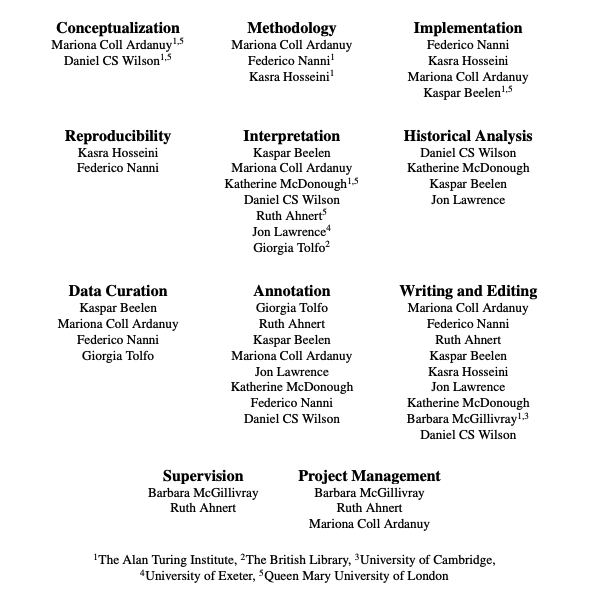We are happy to share our latest @arxiv preprint on atypical animacy, in particular the scenario in which typically inanimate objects (--> machines) are represented as living entities in nineteenth-century British books. We hope you enjoy the thread!
https://arxiv.org/pdf/2005.11140.pdf">https://arxiv.org/pdf/2005....
https://arxiv.org/pdf/2005.11140.pdf">https://arxiv.org/pdf/2005....
This idea was conceived and executed in a highly #interdisciplinary context. To honour that, we& #39;ve presented each author& #39;s contribution as if they were film credits. Find out more at https://livingwithmachines.ac.uk/highlighting-authors-contributions-and-interdisciplinary-collaborations-in-living-with-machines/">https://livingwithmachines.ac.uk/highlight...
In #linguistics, animacy is the property of being alive. In our paper we examine how machines have been imagined over the nineteenth century from lifeless mechanical objects to human-like agents that feel, think, and even love or kill.
This work is motivated by the ubiquitous trope of the living machine, both in the historical discourse of industrialization and in today’s discussion of #AI prefigured
by Alan Turing’s famous provocation: ‘Can machines think?’ https://abs.twimg.com/emoji/v2/... draggable="false" alt="🤔" title="Thinking face" aria-label="Emoji: Thinking face">
https://abs.twimg.com/emoji/v2/... draggable="false" alt="🤔" title="Thinking face" aria-label="Emoji: Thinking face">
@turinginst
by Alan Turing’s famous provocation: ‘Can machines think?’
@turinginst

 Read on Twitter
Read on Twitter



